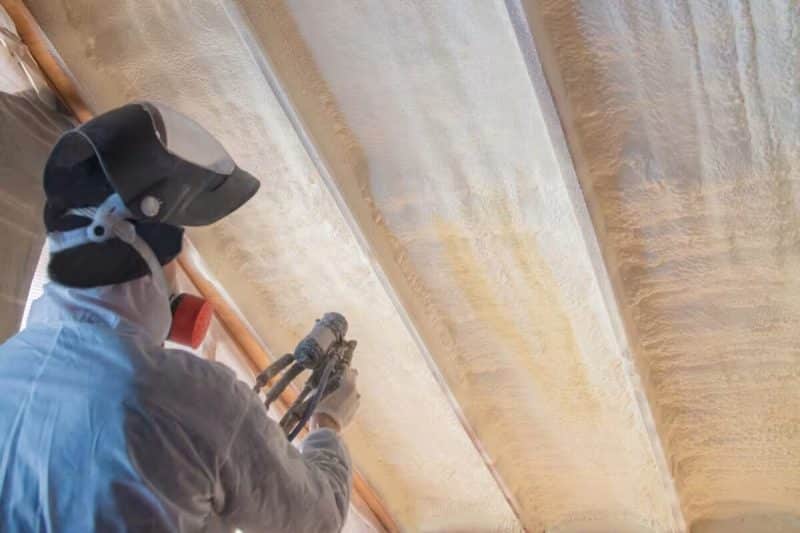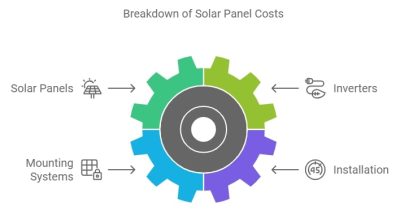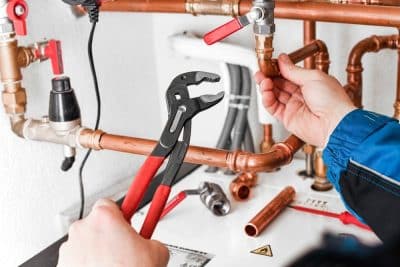
In the quest for a comfortable and energy-efficient home, insulation plays a pivotal role. Among the various insulation options available, spray foam insulation stands out for its versatility, effectiveness, and long-term benefits. When it comes to attics, which are notorious for being hot in the summer and cold in the winter, spray foam insulation offers a comprehensive solution. In this guide, we’ll delve into the world of spray foam insulation for attics, exploring its benefits, installation process, cost considerations, and environmental impact.
Understanding Spray Foam Insulation:
Spray foam insulation is a type of insulation that is sprayed into place, where it expands to fill gaps, cracks, and voids. It is made from two components – polyol resin and isocyanate – which are mixed on-site and sprayed onto surfaces as a liquid. Upon application, the mixture expands and hardens, creating a seamless, airtight barrier that effectively seals the attic space.
Benefits of Spray Foam Insulation for Attics:
Spray foam insulation has become increasingly popular for insulating attics, and for good reason. Its unique properties offer a range of benefits that make it a highly effective choice for homeowners looking to improve comfort, energy efficiency, and overall home performance. Let’s delve deeper into the benefits of spray foam insulation for attics:
Superior Thermal Performance:
Spray foam insulation boasts an impressive thermal resistance, often referred to as the R-value. Compared to traditional insulation materials like fiberglass or cellulose, spray foam typically has a higher R-value per inch. This means it provides better insulation, keeping your attic space cooler in the summer and warmer in the winter. By minimizing heat transfer, spray foam helps maintain a more consistent indoor temperature year-round, reducing the need for excessive heating or cooling and lowering energy bills.
Air Sealing Properties:
One of the most significant advantages of spray foam insulation is its ability to create an airtight seal. Traditional insulation materials may leave gaps or cracks through which air can leak, compromising energy efficiency and indoor comfort. Spray foam, on the other hand, expands to fill even the smallest crevices, effectively sealing off air leaks and drafts. This air sealing property not only improves energy efficiency but also enhances indoor air quality by reducing the infiltration of dust, pollen, and other airborne pollutants.
Moisture Control:
Attics are prone to moisture buildup, which can lead to mold growth, wood rot, and structural damage. Spray foam insulation acts as a moisture barrier, preventing water vapor from infiltrating the attic space. By creating a seamless, impermeable barrier, spray foam helps mitigate the risk of condensation and moisture-related issues. This is particularly beneficial in humid climates or areas prone to temperature fluctuations, where moisture control is essential for maintaining a healthy indoor environment.
Longevity and Durability:
Unlike traditional insulation materials that may degrade over time, spray foam insulation is highly durable and long-lasting. Once applied, it adheres to surfaces and maintains its effectiveness for years to come. Its resilience to settling, sagging, or decomposition ensures long-term performance without the need for frequent maintenance or replacement. This durability makes spray foam insulation a cost-effective investment, offering reliable insulation and energy savings over the lifespan of your home.
Versatility and Customization:
Spray foam insulation can be tailored to fit various attic configurations, including irregular shapes, tight spaces, and hard-to-reach areas. It can be sprayed directly onto surfaces, filling cavities, gaps, and voids to create a seamless layer of insulation. This versatility allows for precise customization to meet the specific insulation needs of your attic, ensuring maximum coverage and effectiveness. Whether your attic has attic trusses, rafters, or other structural elements, spray foam can be applied to provide comprehensive insulation coverage.
Noise Reduction:
In addition to thermal insulation, spray foam also offers excellent sound insulation properties. It helps reduce airborne noise transmission, such as traffic noise, aircraft noise, or outdoor disturbances, creating a quieter and more peaceful indoor environment. This is particularly beneficial for attics that are used as living spaces, home offices, or bedrooms, where noise reduction is essential for comfort and productivity.
Environmental Considerations:
While some formulations of spray foam insulation may contain chemicals with potential environmental and health impacts, there are eco-friendly options available. Soy-based or water-blown spray foam formulations have lower levels of volatile organic compounds (VOCs) and are less harmful to the environment. Additionally, the energy-saving properties of spray foam insulation contribute to reducing overall energy consumption and greenhouse gas emissions, making it a more environmentally sustainable choice in the long run.
Installation Process:
The installation of spray foam insulation in the attic typically involves the following steps:
The installation of spray foam insulation in the attic is a crucial step in optimizing energy efficiency, improving indoor comfort, and protecting your home from moisture-related issues. While the process may seem complex, it follows a systematic approach that ensures thorough coverage and effective insulation. Let’s explore the key steps involved in the installation of spray foam insulation in the attic:
Assessment and Preparation:
Before the installation process begins, a professional insulation contractor will conduct a thorough assessment of the attic space. This involves evaluating the attic’s size, layout, existing insulation, ventilation, and any potential air leakage points. Based on this assessment, the contractor will determine the appropriate type of spray foam insulation and the thickness required to achieve optimal insulation performance. Once the assessment is complete, the attic is prepared for insulation installation. This may involve clearing any debris or obstructions from the attic space, ensuring proper ventilation, and addressing any existing moisture issues. Adequate ventilation is essential to prevent moisture buildup and ensure the longevity of the insulation.
Application of Spray Foam Insulation:
The installation process begins with the application of spray foam insulation. Professional insulation contractors use specialized equipment to apply the spray foam mixture evenly onto the attic surfaces. The two components of spray foam insulation – polyol resin and isocyanate – are mixed on-site and sprayed onto the attic surfaces as a liquid. As the foam is sprayed, it expands to fill cavities, gaps, and voids, creating a seamless layer of insulation. The expansion properties of spray foam allow it to conform to the contours of the attic space, ensuring thorough coverage and effective insulation. It’s essential to apply the foam evenly to prevent any gaps or uneven spots that could compromise insulation performance.
Curing and Trimming:
Once the spray foam insulation is applied, it undergoes a curing process. During this time, the foam expands further and hardens to form a durable, airtight barrier. The curing time varies depending on factors such as temperature, humidity, and the specific product used, but typically ranges from a few hours to a day. After the foam has cured, any excess foam is trimmed away to create a smooth and uniform surface. This trimming process involves removing any foam that has expanded beyond the desired insulation thickness or protrudes into living spaces. The goal is to create a clean and seamless insulation layer that maximizes energy efficiency and indoor comfort.
Final Inspection and Quality Assurance:
Once the installation is complete, a final inspection is conducted to ensure that the spray foam insulation meets quality standards and specifications. This involves checking for any missed spots, uneven application, or other issues that could affect insulation performance. The contractor may also conduct tests to assess air leakage, moisture levels, and overall insulation effectiveness. Quality assurance measures are essential to ensure that the attic is properly insulated and that the installation meets building codes and industry standards. Homeowners should receive documentation confirming the completion of the installation and warranty information for the spray foam insulation product.
Cost Considerations:
The cost of spray foam insulation for attics can vary depending on factors such as the size of the attic, the thickness of insulation required, and local labor rates. On average, homeowners can expect to pay between $1.50 to $3.50 per square foot for professional installation. While the upfront cost of spray foam insulation may be higher than traditional insulation materials, it offers significant long-term savings through reduced energy bills and maintenance costs.
Environmental Impact:
Spray foam insulation is known for its energy-saving properties, but it also has environmental considerations. While it is an effective insulator, some formulations of spray foam contain chemicals with potential environmental and health impacts. However, there are eco-friendly options available, such as soy-based or water-blown spray foam, which have lower levels of volatile organic compounds (VOCs) and are less harmful to the environment.
The Bottom Line
To sum up, spray foam insulation offers a comprehensive solution for insulating attics, providing superior thermal performance, air sealing, moisture control, and durability. While it may require a higher upfront investment, the long-term benefits in terms of energy savings, indoor comfort, and environmental sustainability make it a worthwhile choice for homeowners looking to maximize comfort and efficiency in their homes. By understanding the benefits, installation process, cost considerations, and environmental impact of spray foam insulation, homeowners can make informed decisions to create a more comfortable, energy-efficient, and sustainable living environment.








